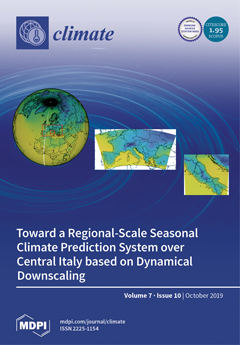We examined the effects of elevated CO
2 and elevated O
3 concentrations on net CO
2 assimilation and growth of
Fagus crenata in a screen-aided free-air concentration-enrichment (FACE) system. Seedlings were exposed to ambient air (control), elevated CO
2 (550 µmol mol
[...] Read more.
We examined the effects of elevated CO
2 and elevated O
3 concentrations on net CO
2 assimilation and growth of
Fagus crenata in a screen-aided free-air concentration-enrichment (FACE) system. Seedlings were exposed to ambient air (control), elevated CO
2 (550 µmol mol
−1 CO
2, +CO
2), elevated O
3 (double the control, +O
3), and the combination of elevated CO
2 and O
3 (+CO
2+O
3) for two growing seasons. The responses in light-saturated net CO
2 assimilation rates per leaf area (
Agrowth-CO2) at each ambient CO
2 concentration to the elevated CO
2 and/or O
3 treatments varied widely with leaf age. In older leaves,
Agrowth-CO2 was lower in the presence of +O
3 than in untreated controls, but +CO
2+O
3 treatment had no effect on
Agrowth-CO2 compared with the +CO
2 treatment. Total plant biomass increased under conditions of elevated CO
2 and was largest in the +CO
2+O
3 treatment. Biomass allocation to roots decreased with elevated CO
2 and with elevated O
3. Elongation of second-flush shoots also increased in the presence of elevated CO
2 and was largest in the +CO
2+O
3 treatment. Collectively, these results suggest that conditions of elevated CO
2 and O
3 contribute to enhanced plant growth; reflecting changes in biomass allocation and mitigation of the negative impacts of O
3 on net CO
2 assimilation.
Full article





